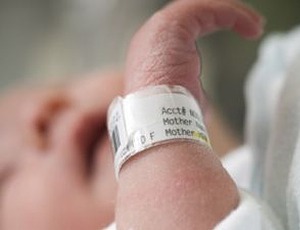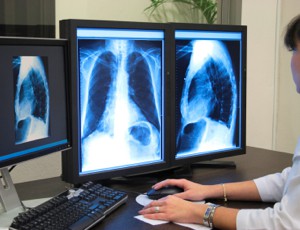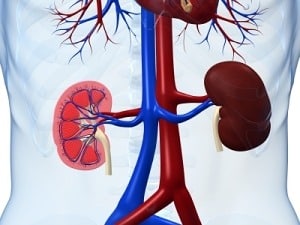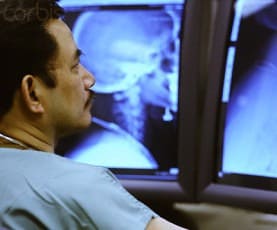Impact of biofilm formation on the persistence of candidemia

This study aimed to determine the predictors of persistent candidemia and examine the impact of biofilm formation by Candida isolates in adult patients with candidemia” Li et al (2018). Abstract: This study aimed to determine the predictors of persistent candidemia and examine the impact of biofilm formation by Candida isolates in adult patients with candidemia. […]
Three-step procedure for safe internal jugular vein catheterization under ultrasound guidance

To avoid these complications, we perform a three-step procedure to place an internal jugular vein catheter under ultrasound guidance” Tampo (2018). Abstract: Real-time ultrasound guidance for central venous catheterization has become a standard technique. This technique has been reported to yield high success rates and fewer complications compared with landmark techniques. However, it can be […]
Totally implantable venous access port implantation via the axillary vein

These data indicate that totally implantable venous access port implantation via the axillary vein in patients with head and neck malignancy is safe and feasible, with a low axillary vein access-related complication rate” Hong et al (2018). Abstract: PURPOSE: To evaluate the clinical outcomes and complications of totally implantable venous access port implantation via the […]
Jugular vs femoral vein for central venous catheterization in pediatric cardiac surgery

The purpose of the present protocol is to evaluate the risk for infectious complications in terms of catheter colonization, catheter line-associated bloodstream infections, and catheter-related bloodstream infections (CRBSIs), and the mechanical complications from different central venous access sites in infants and newborns undergoing cardiac surgery” Silvetti et al (2018). Abstract: BACKGROUND: Placement of central venous […]
Outcomes associated with tunneled central venous catheters in infants and children

This study aims to evaluate the success, safety, and complications leading to surgical revision or premature removal of TCVC in this particular patient group” Martynov et al (2018). Abstract: BACKGROUND: There is a paucity of information on procedural and long-term outcomes of tunneled central venous catheters (TCVC) in infants and children younger than 3 years […]
Increased central line placement rates in patients with sepsis

We hypothesized that the percentage of CVPL placed for sepsis has increased over time, whereas the frequency of lines placed for other conditions has not changed” Close et al (2018). Abstract: BACKGROUND: Early goal directed therapy for sepsis patients requires placement of central lines (CVPL) to measure central pressure. OBJECTIVE: We hypothesized that the percentage […]
Effectiveness of early planned removal of PICCs on CLABSI prevention?

To determine the effectiveness of early planned removal of PICCs (up to two weeks after insertion) compared to an expectant approach or a longer fixed duration in preventing bloodstream infection and other complications in newborn infants” Gordon et al (2018). Abstract: BACKGROUND: Duration of use may be a modifiable risk factor for central venous catheter-associated […]
Predictive factors for CLABSI in pediatric cardiac surgery patients

To assess the prevalence of central line-associated bloodstream infections in pediatric patients with and without chylothorax after cardiac surgery and identify risk factors that predict those patients at highest risk for developing a central line-associated bloodstream infection” Waterhouse et al (2018). Abstract: OBJECTIVES: To assess the prevalence of central line-associated bloodstream infections in pediatric patients […]
Optimal scrub-time for the disinfection of injection ports

Though the optimal technique or disinfection time has not formally been identified through RCTs, nevertheless scrubbing with chlorhexidine-alcohol for 15 sec is seen as a reasonable recommendation and consistent with conclusions of three big reviews during the past three years (two from the UK, and one from Australia/USA)” Breimer et al (2018). Abstract: Central venous […]
Carotid artery infusion via implantable catheters for squamous cell carcinoma of the tonsils

To avoid exceeding toxicity limits in patients with primary and recurrent cancers of the tonsils, chemotherapy was administered intra-arterially via implantable Jet-Port-Allround catheters” Aigner et al (2018). Abstract: BACKGROUND: Chemoradiotherapy has a dominant role in therapy for head and neck cancers. However, impressive results are often disturbed by adverse events such as dysphagia, xerostomia, and […]
Central line bundle for prevention of implantable port infection

Central line bundle programs were found to be effective in decreasing central line-associated bloodstream infection rates, improving patients’ quality of life by preventing ports removal due in pediatric cancer patients” Devrim et al (2018). Abstract: OBJECTIVE: The clinical impact of central line bundle programs for central line-associated bloodstream infections has been well demonstrated in intensive […]
Minocycline, EDTA and ethanol lock for salvaging of central line associated bloodstream infections

Our study suggests that M-EDTA-EtOH lock therapy may be an effective intervention to salvage long-term CVCs in the setting of CLABSI/CRBSI and hemodialysis cancer patients with limited vascular access” Hachem et al (2018). Abstract: BACKGROUND: The use of long-term central venous catheters (CVCs) could lead to serious bloodstream infections. Removal of the infected CVC and […]
Vascular access complications in patients undergoing percutaneous procedures

To map the production of knowledge on vascular access complications in patients undergoing percutaneous procedures in hemodynamic laboratories” Reich et al (2018). Abstract: OBJECTIVE: To map the production of knowledge on vascular access complications in patients undergoing percutaneous procedures in hemodynamic laboratories. METHODS: Scoping review study. The search strategy was developed in three stages, considering […]
Costs of pediatric home parenteral nutrition central line infections

To evaluate institutional cost of community-acquired CLABSI in pediatric HPN patients” Raphael et al (2018). Abstract: BACKGROUND: While previous literature suggests home parenteral nutrition (HPN) dependent children experience frequent complications like community acquired central line associated bloodstream infections (CLABSI), few studies have characterized the cost. OBJECTIVES: To evaluate institutional cost of community-acquired CLABSI in pediatric […]
Abstracts from the 5th World Congress on Vascular Access WoCoVA 2018

Abstracts from the 5th World Congress on Vascular Access WoCoVA 2018″ WoCoVA (2018). The abstracts of WoCoVA 2018 are published in the Journal of Vascular Access and are available to read if you click the link below. [button link=”http://journals.sagepub.com/doi/10.1177/1129729818778929″ color=”default”]Read Abstracts[/button] [spacer height=”20px”] <!– ClickToTweet Embed Code Start –> <script type=”text/javascript” src=”//clicktotweet.com/embed/rn1Ia/1″></script> <!– ClickToTweet Embed […]
Effectiveness of ‘hospital in the home’ and ‘outpatient parenteral antimicrobial therapy’

The aim of this study was to systematically review the published literature of observational studies evaluating the safety and effectiveness of hospital in the home (HITH) and outpatient parenteral antimicrobial therapy (OPAT) in the general population, older people and children” Sriskandarajah et al (2018). Abstract: OBJECTIVE: The aim of this study was to systematically review […]
Efficacy of urokinase lock to treat thrombotic dysfunction of tunneled hemodialysis catheters

There are few data to inform decisions about the optimal management of occluded tunneled cuffed hemodialysis catheters with thrombolytic locking solutions. The effect of dose, dwell-time, and number of administrations remains controversial” Van Hulle et al (2018). Abstract: BACKGROUND: There are few data to inform decisions about the optimal management of occluded tunneled cuffed hemodialysis […]
The role of simulation in central venous catheterization training

In this review, we discuss relevant adult learning principles that support simulation-based CVC training, review the literature on simulation-based CVC training, and highlight the use of simulation-based CVC training programs at various institutions” Soffler et al (2018). Abstract: Simulation is a popular and effective training modality in medical education across a variety of domains. Central […]
Central venous catheter occlusion during chronic epoprostenol infusion

Due to its short half-life, its solution must be prepared frequently and administered as a continuous intravenous infusion” Kopeć et al (2018). Abstract: Epoprostenol sodium is recommended for the treatment of high-risk patients with pulmonary arterial hypertension. The use of high doses of this drug has been associated with long-term survival. Due to its short […]
Will peripheral parental nutrition containing amino acids prevent Bacillus cereus?

Patients receiving peripheral parenteral nutrition containing amino acids are at higher risk of developing Bacillus cereus bloodstream infections, compared with those receiving other parenteral nutrition solutions” Shiota et al (2018). Background: Patients receiving peripheral parenteral nutrition containing amino acids are at higher risk of developing Bacillus cereus bloodstream infections, compared with those receiving other parenteral […]
Review of home haemodialysis in the Netherlands

Home haemodialysis (HHD) has gained popularity in recent years, due to improved clinical outcomes associated with frequent or prolonged haemodialysis sessions, best achievable at home” Bonenkamp et al (2018). Abstract: Home haemodialysis (HHD) has gained popularity in recent years, due to improved clinical outcomes associated with frequent or prolonged haemodialysis sessions, best achievable at home. […]
Comparison of complications between peripheral arm ports and central chest ports

Arm ports are a safe option beside chest ports for adult patients with malignancy, especially in patients with head-neck cancer or breast cancer. Patients should be well informed of the advantages and disadvantages of different vascular access devices and provided a choice” Wu et al (2018). Abstract: AIM: To compare peripheral arm ports versus central […]
Ultrasound-guided versus landmark approach for peripheral intravenous access

The aim of this study was to compare an ultrasound-guided method (UGM) versus the landmark method (LM) for the placement of a PIVC in ICU patients who no longer require a central intravenous catheter (CIVC)” Bridey et al (2018). Abstract: OBJECTIVE: Establishing a peripheral intravenous catheter (PIVC) after a long intensive care unit (ICU) stay […]
ECG-guided PICC tip position verification in patients with atrial fibrillation

The ECG-guided technique represents a safe and accurate technique to verify the position of PICC tip in patients with AF and could potentially remove the requirement for postprocedural chest X-ray among the patients with AF” Gao et al (2018). Abstract: BACKGROUND: Tip position verification of peripherally inserted central catheters (PICCs) is essential to the use […]
Chest wall hematoma after central venous hemodialysis catheter insertion

The right subclavian hemodialysis catheter was inserted for hemodialysis on the same day. She did not have a history of bleeding disorders and was not taking any antiplatelet or anticoagulant agents. Additionally, she had no recent trauma episodes. Physical examination revealed a large ecchymosis over the anterior right chest wall with swelling and tenderness” Wu […]
How to undertake CLABSI surveillance in home infusion therapy

The importance of central line–associated bloodstream infection (CLABSI) prevention has been increasingly recognized over the last 2 decades in acute care settings” Keller et al (2018). Abstract: The importance of central line–associated bloodstream infection (CLABSI) prevention has been increasingly recognized over the last 2 decades in acute care settings. National policies focusing on surveillance and […]
Interventions to decrease short-term peripheral venous catheter-related bloodstream infections

To assess the effectiveness of interventions applied to reduce the incidence and mortality associated with short peripheral venous catheter-related bloodstream infections (PVCR-BSI)” Saliba et al (2018). Summary: Background: Short-term peripheral venous catheters are a significant source of health-care acquired bloodstream infections and a preventable cause of death. Aim: To assess the effectiveness of interventions applied […]
Thrombogenic superior vena cava syndrome from long-standing central venous access

The increased use of central venous catheters has resulted in more non-malignant cases of superior vena cava syndrome across all age groups. We present a 5-year-old male with superior vena cava syndrome associated with acute onset of severe upper extremity and facial swelling, dyspnea, and a right subclavian central venous catheter malfunction” Ji et al […]
Skin problems associated with insulin pumps and sensors in adults

The aim of this study was to describe the dermatological complications associated with continuous subcutaneous insulin infusion (CSII) and continuous glucose monitoring (CGM) in adults” Berg et al (2018). Abstract: BACKGROUND: In the future, widespread use of closed-loop infusion (artificial pancreas) systems to treat type 1 diabetes (T1D) may significantly improve glycemic control and enhance […]
Insulin pump breakdown and infusion set failure in Italian children with type 1 diabetes

This prospective 1-yr study on a large cohort of Italian children and adolescents with type 1 diabetes using insulin pump therapy showed a low total failure rate, highlighting the importance of continuous education to reduce failures” Rabbone et al (2018). Abstract: AIMS: Incidence of insulin pump failures in a cohort of children and adolescents with […]

